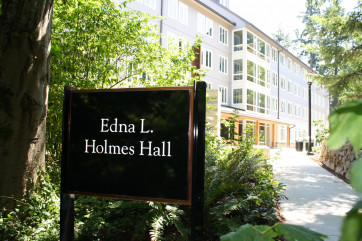Green Building
What do we mean by “Green” Building?
Lewis & Clark College has made a commitment to integrate environmentally responsible development practices into its construction program. These practices are generally known as ‘green architecture’ or ‘green building’ and imply a development methodology that stresses solving the needs of the present, without diminishing the resources necessary to solve the needs of the future. In building construction, this is normally accomplished by creating architecture that minimizes use of natural resources, energy, toxic materials and emissions of waste and pollutants and maximizes use of recycled materials.

Our basic strategy will be to implement sustainable development construction practices to the maximum extent possible without increasing baseline construction costs. If the first costs of implementing a particular sustainable development strategy exceed the costs of “traditional” technology, then the sustainable development strategy will be evaluated on the basis of life cycle cost/benefit analysis and evaluated against other project priorities. To implement this strategy, the college has adopted the US Green Building Council, Leadership in Energy and Environmental design (LEED) methodology.
The LEED system was established by the US Green Building Council to recognize buildings that incorporate into their design and construction methods a specific minimum level of sustainable technology. All Lewis & Clark College projects must meet the LEED ‘Certified’ level of sustainable development. The LEED standard was selected as our measure because it is and industry-wide standard, with clear and objective evaluative tools and guidelines for measuring progress towards sustainable development objectives. J.R. Howard meets LEED’s gold standard.
Facilities Services is located in Facilities Services on the Undergraduate Campus.
MSC: 76
email facility@lclark.edu
voice 503-768-7845
fax 503-768-7023
Associate Vice President of Facilities Services David Ernevad
Facilities Services
Lewis & Clark
615 S. Palatine Hill Road MSC 76
Portland OR 97219